Guinea Pig 101: Everything First-Time Owners Need to Know
- Amanda Jones

- Aug 16
- 10 min read
A comprehensive "Guinea Pig 101" guide that covers everything a first-time owner needs to know. This guide includes:
Understanding Guinea Pigs - What they are, why they make great pets.
Choosing Your Guinea Pigs - How many, where to get them, health signs to look for.
Setting Up Home - Cage requirements, essential supplies shopping list.
Complete Nutrition Guide - The four pillars of guinea pig diet with specific amounts and foods.
Daily Care Routines - What to do daily, weekly, and monthly.
Behavior Understanding - Normal behaviors vs. signs of illness.
Health and Veterinary Care - Finding vets, preventive care, common issues.
Environmental Needs - Temperature, lighting, safe floor time.
Bonding and Socialization - Building trust and reading body language.
Troubleshooting - Solutions to common challenges.
Budget Planning - Realistic cost breakdowns for setup and ongoing care.
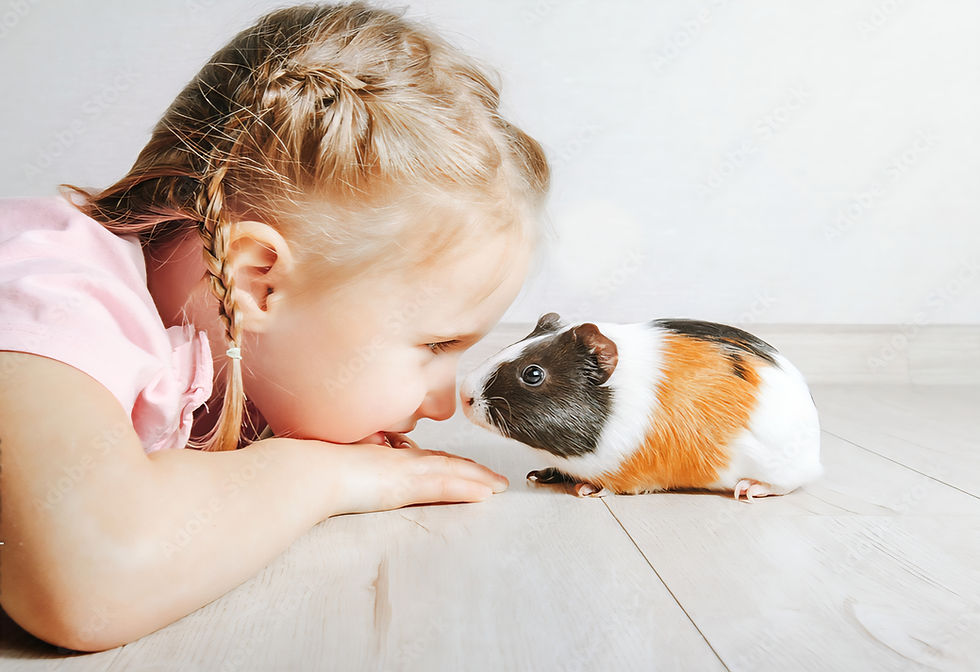
Guinea Pig Basics: A Complete Starter Guide for New Owners
Congratulations on choosing guinea pigs as your new pets! These adorable, social creatures make wonderful companions with their unique personalities, gentle nature, and charming localization. However, guinea pigs have specific needs that differ significantly from other small pets like hamsters or rabbits.
Understanding Guinea Pigs: The Basics
What Are Guinea Pigs?
Guinea pigs (scientific name Cavia porcellus) are small rodents originally from South America. Despite their name, they're not related to pigs and don't come from Guinea. They're also called "cavies" and have been domesticated for over 3,000 years. These social animals typically live 5-8 years and weigh between 1.5-3 pounds when fully grown.
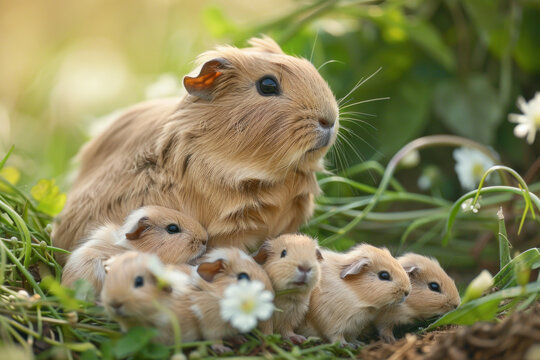
Why Guinea Pigs Make Great Pets
Gentle Temperament: Rarely bite and are generally calm.
Social and Interactive: Enjoy human companionship and can recognize their owners.
Vocal Communication: Make adorable sounds to communicate their needs (Wheeek!).
Diurnal Activity: Active during the day when you are.
Relatively Low Maintenance: Once properly set up, daily care is manageable.
Great for Families: Excellent pets for children when properly supervised.
Important Considerations Before Getting Guinea Pigs
They're Social Animals: Guinea pigs should never be kept alone; they need at least one companion.
Long-Term commitment: 5-8 years lifespan requires dedication.
Daily Care Required: They need fresh food, hay, and water every day.
Veterinary Costs: Require exotic veterinarian, which can can be more expensive.
Space Requirements: Need much more room than many people realize.
Not Cuddly Lap Pets: While friendly, they prefer ground-level interaction.
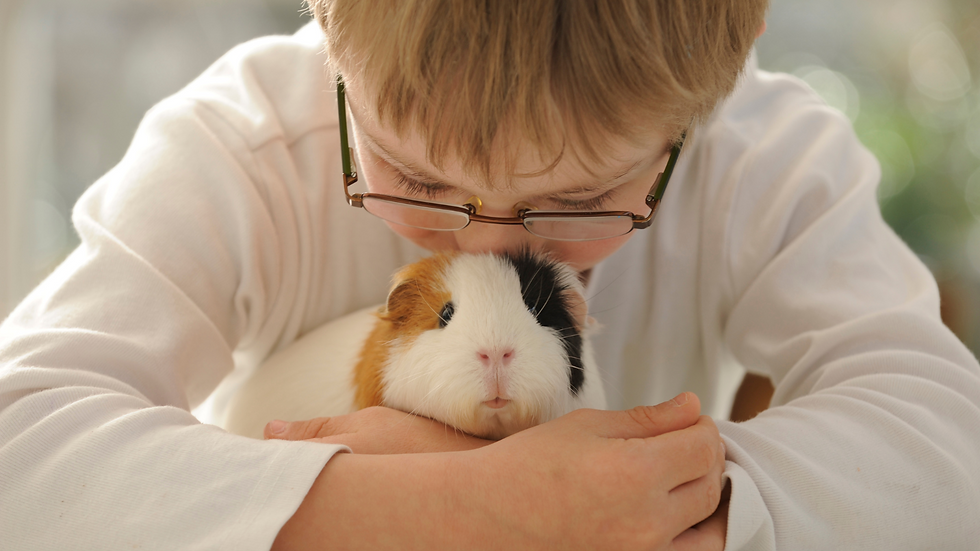
Choosing Your Guinea Pig
How Many Guinea pigs Should You Get?
Always get at least two Guinea pigs. They are highly social animals that can become depressed, stressed, and develop health problems when kept alone. A single Guinea pig, even with lots of human attention, cannot replace the companionship of another Guinea pig.
Best Combinations:
Two females (sows) - Generally get along well
Two males (boars) - Usually compatible, especially if introduced young
One neutered male with females - Requires surgical neutering
Avoid:
Single Guinea pigs
Unneutered males with females (unless you want babies)
Large groups without adequate space
Where To Get Guinea pigs
Rescue Organizations and Shelters:
Often have bonded pairs available
Guinea pigs come health-checked and often already socialized
Usually less expensive than pet stores
You're helping animals in need

Reputable Breeders:
Can provide health history and lineage information
Often have a variety of breeds and colors
May offer ongoing support and advice
Usually more expensive but may have healthier animals
What to avoid:
Pet stores (often have health issues and unknown backgrounds)
Online classified ads without meeting the animal first
"Backyard breeders" without proper knowledge or care
Choosing Healthy Guinea Pigs
Signs of a healthy Guinea pig:
Bright, clear eyes with no discharge
Alert and active behavior
Good appetite (should be eating when you visit)
Clean, fluffy coat with no bald patches
Normal breathing (not labored or wheezing)
Healthy weight (not too thin or overweight)
Clean bottom with no signs of diarrhea
Red flags to avoid
Lethargic or hiding constantly
Discharge from eyes, nose, or genital area
Overgrown nails or teeth
Patches of missing fur
Sneezing, coughing, or labored breathing
Dirty or matted fur
Very thin or overweight
Setting Up Your Guinea Pig Home
Cage Size and Requirements

Minimum Cage sizes
Two Guinea pigs: 8 square feet (30" × 30")
Three Guinea pigs: 10.5 square feet (30" × 50")
Four Guinea pigs: 13 square feet (30" × 62")
Bigger is always better! These are absolute minimums, and larger spaces will make your Guinea pigs much happier and healthier.
Cage Features to Look for:
Solid bottom: Wire floors can injure feet and legs
Good ventilation: Avoid aquariums or enclosed spaces
Easy access: Front-opening doors for interaction and cleaning
Appropriate bar spacing: 1 inch or less to prevent escapes
Sturdy Construction: Guinea pigs can be surprisingly strong
Popular Cage Options:
C&C cages (cubs and coroplast) - Customizable and spacious
Large rabbit cages - Often more spacious than "Guinea pig" cages
Custom-built enclosures - Can be tailored to your space
Essential Supplies Shopping List
Housing essentials:
Large cage meeting minimum size requirements
Water bottle (glass preferred over plastic)
Heavy ceramic food bowl
Hay rack or hay bin
Hide houses (at least one per Guinea pig)
Soft bedding material
Food and Nutrition
High-quality Guinea pig pellets
Timothy hay (unlimited supply)
Fresh vegetables
Vitamin C tablets (if recommended by vet)
Healthy treats (in moderation)
Health and Grooming
Small animal nail clippers
Soft brush (especially for long-haired breeds)
Digital kitchen scale for weekly weigh-ins
Small animal carrier for vet visits
First aid supplies
Optional but Helpful
Fleece liners for easier cleaning
Additional Hide houses and tunnels
Safe chew toys
Exercise pen for floor time
Camera to monitor when you're away
Nutrition: Feeding Your Guinea Pigs Right
The Four Pillars of Guinea Pig Nutrition
Timothy Hay (Unlimited)
Most important part of their diet
Should make up 75% of their food intake
Provides essential fiber for digestive health
Helps wear down constantly growing teeth
Should be available 24/7

Hay quality tips:
Look for green, sweet-smelling hay
Avoid dusty, Brown, or moldy hay
Store in a cool, dry place
Buy from reputable suppliers
High-Quality Pellets (measured Amount)
Daily amount: 1/8 cup per pound of body weight
Choose pellets specifically formulated for guinea pigs
Should be fortified with Vitamin C
Avoid pellets with seeds, nuts, or colorful pieces
Use within 6 months of manufacture date

Fresh Vegetables (Daily)
Daily amount: About 1 cup per Guinea pig
Focus on vitamin C-rich vegetables gradually
Wash thoroughly before serving

Excellent daily vegetables:
Bell peppers (red, yellow, orange - highest vitamin C)
Leafy greens (romaine lettuce, cilantro, parsley)
Cucumber
Tomatoes (remove seeds and green parts)
2-3 times per week vegetables:
Carrots
Broccoli
Cauliflower
Zucchini
Celery
Avoid these dangerous foods:
Iceberg lettuce
Onions and garlic
Chocolate
Avocado
Potatoes
Rhubarb
Any processed human foods
Fresh Water (Always Available)
Provide clean, fresh water daily
Use water bottles rather than bowls (stays cleaner)
Check bottles daily to ensure they're working
Clean bottles weekly with bottle brushes

Special Dietary Considerations
Vitamin C Requirements
Guinea pigs cannot produce vitamin C (like humans)
Need 30mg daily for adults, 100mg for pregnant/nursing sows
Fresh vegetables should provide adequate vitamin C
Supplements may be needed in some cases (consult your vet)
Treats (sparingly):
Small pieces of fruit (apple, strawberry, banana)
Commercial Guinea pig treats (read ingredients carefully)
Limit treats to prevent digestive upset and picky eating
Daily Care and Maintenance
Daily Tasks (5-10 minutes)
Check food and water: Refill pellet bowl, refresh water, add hay
Quick health check: Look for signs of illness or injury
Spot cleaning: Remove soiled bedding and uneaten fresh vegetables
Social interaction: Spend time talking to and observing your guinea pigs
Weekly Tasks (30-45 minutes)
Weigh each Guinea pig: Use kitchen scale to track weight changes
Deep cage cleaning: Replace all bedding, clean food bowls and water bottles
Nail trimming: Check and trim nails if needed
Thorough health check: Examine eyes, ears, teeth, and overall condition
Monthly Tasks
Cage deep clean: Disinfect cage bottom and accessories
Grooming: Brush long-haired Guinea pigs thoroughly
Supply check: Restock hay, pellets, and bedding
Health assessment: Note any changes in behavior or appearance
Understanding Guinea Pig Behavior
Normal Behaviors
Popcorning:
Sudden jumping and twisting in the air
Sign of happiness and excitement
More common in young Guinea Pigs but adults do it too
Wheeking:
High-pitched whistling sound
Usually means excitement, especially about food
Can also indicate loneliness or attention-seeking
Purring:
Low rumbling sound when content
Often occurs during petting or when comfortable
Different from teeth chattering, which indicates annoyance
Teeth Chattering:
Rapid clicking of teeth
Sign of annoyance, dominance, or warning
Give your guinea pig space when you hear this
Rumblestrutting:
Walking with a swaying motion while rumbling
Dominance behavior, more common in males
Normal part of establishing hierarchy
Signs Of Illness Or Distress
Immediate Veterinary Attention Needed:
Not eating for more than 12 hours
No droppings for more than 12 hours
Difficulty breathing
Discharge from eyes, nose, or genital
Lethargy or hiding constantly
Hunched posture with teeth grinding (indicates pain)
Schedule Veterinary Appointment Soon:
Changes in eating or drinking habits
Weight loss or gain
Changes in urination or defecation
New lumps or bumps
Changes in behavior or activity level
Health and Veterinary Care
Finding the Right Veterinarian
Not all veterinarians are experienced with Guinea pigs, look for:
Exotic animal veterinarians who regularly treat guinea pigs
Experience with small mammals and their specific needs
emergency services or referral network for after-hours care
Reasonable distance from your home for emergencies
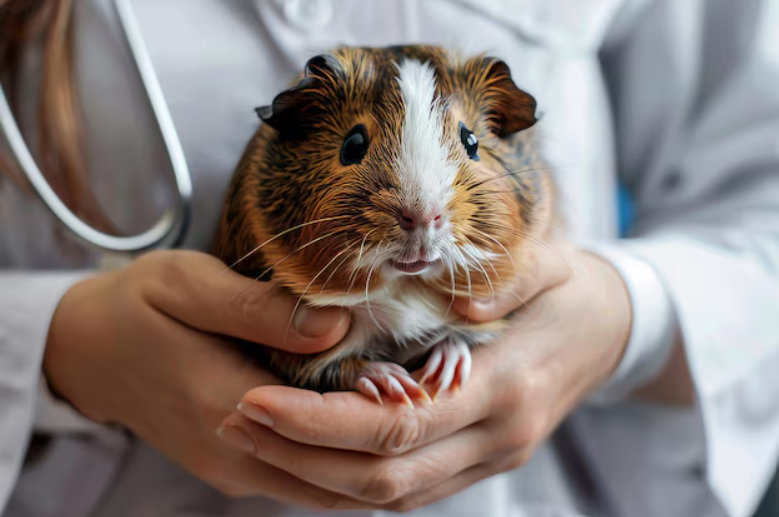
Preventive Health Care
Regular checkups:
Annual wellness exams for healthy adults
More frequent visits for elderly or sick guinea pigs
***Establish care before you need emergency services***
At-home monitoring:
Weekly weigh-ins to catch health issues early
Daily observation of eating, drinking, and elimination
Regular handling to check for lumps, bumps, or changes
Documentation of any concerning changes
Common Health Issues
Scurvy (Vitamin C deficiency):
Joint swelling, dental problems, poor healing
Prevented with proper diet and fresh vegetables
Upper respiratory infections:
Sneezing, discharge, difficulty breathing
Often caused by poor ventilation or stress
Dental problems:
Overgrown teeth, difficulty eating, drooling
Prevented with unlimited timothy hay
GI stasis:
Digestive system slowdown, life-threatening
Requires immediate emergency veterinary care
Creating the Perfect Environment
Temperature and climate
Ideal temperature: 65-75 F (18-24 C)
Avoid drafts but ensure good ventilation
Monitor humidity: Keep between 30-70%
Never leave in direct sunlight or near heat sources
Provide cooling options in summer (ceramic tiles, fans)
Lighting
Guinea pigs prefer natural day/night cycles
Avoid keeping them in dark rooms or under constant bright lights
Gradual lighting changes are better than sudden on/off
Noise Levels
Guinea pigs have sensitive hearing
Avoid loud noises like televisions, music, or shouting
Quiet, calm environments help reduce stress
Talk softly to your guinea pigs to build trust
Safe Floor Time
Daily exercise outside the cage is important
Guinea pig-proof the area: Remove cables, toxic plants, small objects
Supervise constantly to prevent injuries or escape
Provide hiding spots so they feel secure
Start with short sessions (15-30 minutes) and gradually increase
Bonding and Socialization
Building trust with your guinea pigs
Go slow:
Let them settle in for a few days before extensive handling
Sit near the cage and talk softly to them
Offer treats from your hand once they're comfortable
Proper handling:
Always support their bottom and chest
Never grab them from above (predator behavior)
Keep them close to your body or a secure surface
Start with short handling sessions
Reading their body language:
Comfortable: Relaxed posture, normal vocalizations, accepting treats
Stressed: Hiding, teeth chattering, trying to escape, freezing
Happy: Popcorning, wheeking for attention, approaching you
Signs of a Well-Bonded Guinea Pig
Approaches the front of cage when you appear
Takes treats gently from your hand
Allows petting without trying to escape immediately
Vocalizes when they see you
Relaxes during handling sessions
Troubleshooting Common Challenges
"My guinea pig won't eat vegetables!"
Introduce new foods very gradually
Try different preparation methods (chopped, whole, etc.)
Mis new vegetables with familiar favorites
Be patient - it can take many tries for acceptance
"My guinea pigs fight constantly!"
Some dominance behavior is normal
Ensure adequate space and resources
Provide multiple hiding spots and food areas
Separate only if there's actual injury or excessive aggression
"My guinea pig seems lonely despite having a companion"
Ensure adequate space for both guinea pigs
Check that both are healthy (illness can affect social behavior)
Some guinea pigs are naturally more social than others
Increase your interaction time with them
"Cage cleaning takes forever!"
Consider switching to fleece liners for easier washing
Spot-clean daily to make weekly cleaning faster
Use small handheld vacuum for quick cleanup
Develop an efficient cleaning routine
Budget Planning for Guinea Pig Ownership
Initial Setup Costs (estimated)
Cage accessories: $100-$300
Initial supplies (bedding, food, etc.): $50-$100
Two guinea pigs: $20-$100 (varies by source)
Initial veterinary checkup: $50-$100 per pig
Total initial investment: $220-$600
Monthly Ongoing Costs (estimated)
Hay: $15-$25
Pellets: $10-$15
Fresh vegetables: $20-$30
Bedding: $15-$25
Total monthly: $60-$95
Annual Costs (estimated)
Monthly supplies: $720-$1,140
Veterinary care: $100-$300 per pig
Total annual: $820-$1,440 for two guinea pigs
Emergency Fund
Keep $500-$1,000 available for emergency veterinary care
Guinea pig emergencies can be expensive but are often treatable
Consider pet insurance if available for exotic animals
Conclusion: Your Journey with Guinea Pigs
Bringing guinea pigs into your home is the beginning of a wonderful adventure. These charming animals will reward your proper care with years of companionship, entertainment, and affection. Remember that good guinea pig care is about consistency, observation, and responding to their needs.
Key takeaways for success:
Always keep at least two guinea pigs together
Provide unlimited timothy hay and proper nutrition
Maintain a clean, spacious living environment
Find an exotic veterinarian before you need one
observe your guinea pigs daily for health changes
Be patient as you build trust and bonds
Guinea pigs are not the "easy" pets that some people believe them to be, but they're incredibly rewarding for owners who understand and meet their needs. With the information in this guide, you're well-equipped to provide excellent care for your new furry family members.
Welcome to the wonderful world of guinea pig ownership! your journey with these delightful creatures is just beginning, and with proper care and lots of love, you'll create many happy memories together.
You can download this free guide below!
Related Resources:
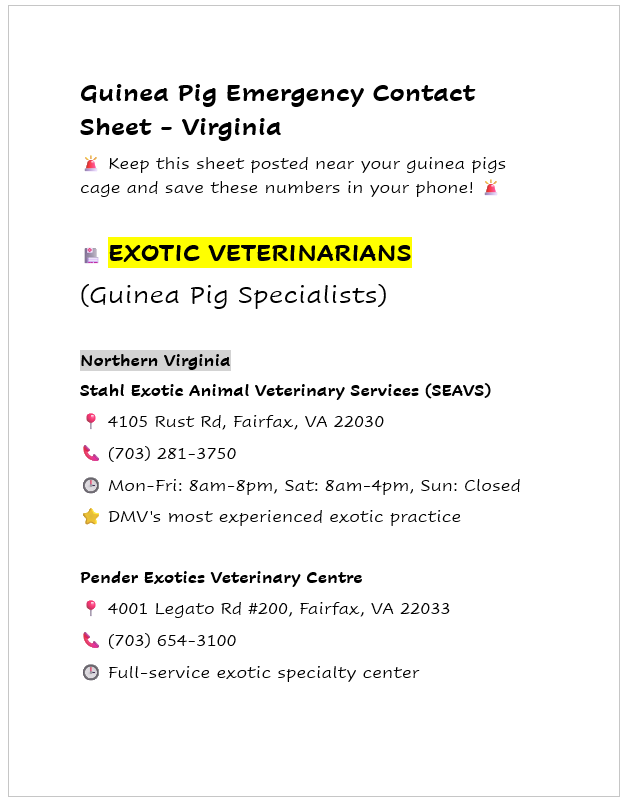
Free Emergency Contact Sheet Specifically For Virginia Guinea Pig Owners! This printable resource includes:
Exotic Veterinarians (organized by region (Northern VA, Central VA, etc.)
24-Hour Emergency Hospitals that treat exotic pets
Poison Control Hotlines with fees and availability
Guinea Pig Rescue Organizations throughout Virginia
Supply Store Locations both physical and online
Quick Reference Checklist for emergencies
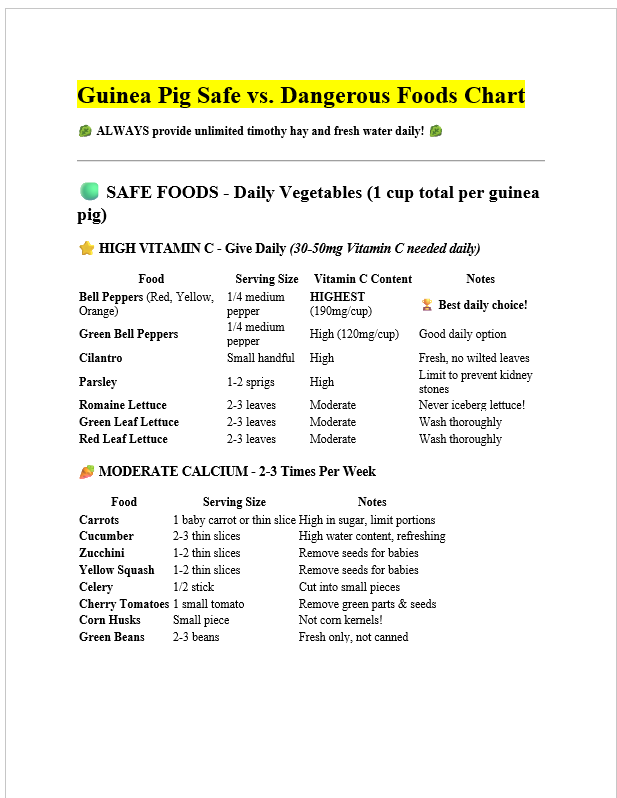
Free Safe Vs. Dangerous Foods Chart For Guinea Pig Owners! This printable resource includes:
Color-coded sections (🟢 Safe, 🔴 Dangerous) for quick visual reference
Detailed safe foods list organized by vitamin C content and frequency
Portion sizes with visual references
Complete dangerous foods section with explanations of why each food is harmful
Toxic plants list for household safety
Feeding schedule and preparation tips

Free C&C Cage Building Guide with detailed step-by-step assembly instructions! This printable resource includes:
Complete shopping list with quantities and where to buy
Size requirements for different numbers of guinea pigs
Step-by-step assembly broken into manageable phases
Visual guides for cutting and assembly
Troubleshooting section for common problems
Cost breakdown and comparison to commercial cages
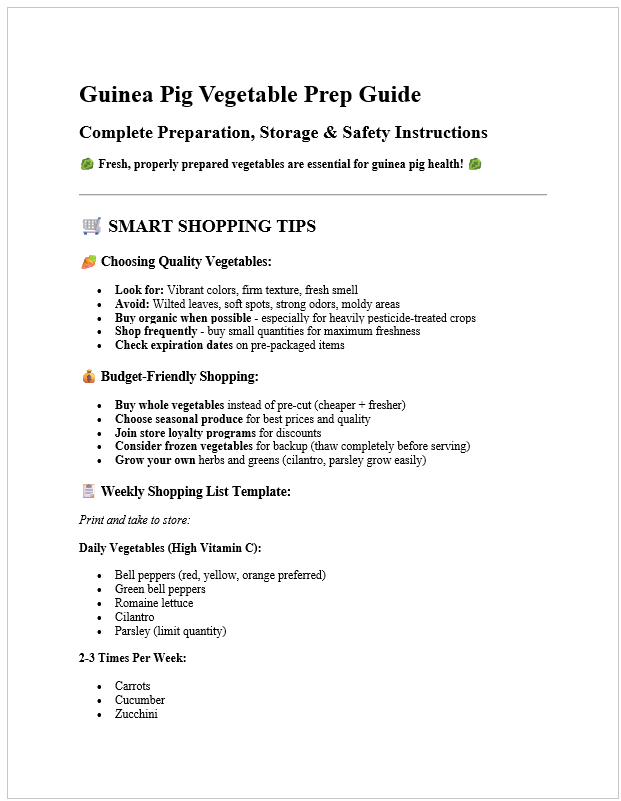
Free Vegetable Prep Guide specifically designed for guinea pig owners! This printable resource includes:
Smart shopping tips with quality indicators and budget advice
Detailed washing procedures including pesticide removal
Vegetable-specific prep instructions with cutting guidelines
Multiple storage solutions for different schedules
Flexible preparation schedules (daily, batch, emergency)
Food safety protocols and quality checks

Welcome to Designs by Mandy!
I'm Amanda, a designer dedicated to providing valuable tips, tools, strategies, and worksheets for children. To learn more about me or explore my website, click the link below.









Comments